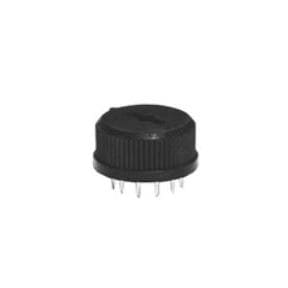
KYOCERA AVX
KYOCERA AVX is a leading manufacturer of electronic components, specializing in ceramic capacitors, connectors, and filters. With a history dating back to 1972, KYOCERA AVX has become a trusted name in the electronics industry, known for their high-performance products and exceptional customer service. The company's product portfolio includes a wide range of passive electronic components designed to meet the specific needs of various industries, including automotive, aerospace, and telecommunications. KYOCERA AVX's state-of-the-art facilities, advanced technologies, and skilled workforce enable them to deliver customized solutions with exceptional accuracy and reliability. The company is committed to sustainability, using eco-friendly materials and production methods to minimize their impact on the environment. Through continuous innovation and a customer-centric approach, KYOCERA AVX continues to drive progress in the field of electronic components, providing cutting-edge products designed to meet the evolving needs of modern industries.
Rotary Switches
Results:
5
Series
Number of Positions
Number of Poles per Deck
Circuit per Deck
Actuator Type
Actuator Length
Index Stops
Termination Style
Current Rating (Amps)
Contact Finish
Angle of Throw
Mounting Type
Depth Behind Panel
Voltage Rating - DC
Contact Timing
Voltage Rating - AC
Contact Material
Features
Number of Decks
Results remaining:5
Applied Filters:
KYOCERA AVX
About Rotary Switches
Rotary switches are mechanical devices that are specifically engineered to manage multiple electrical circuits by utilizing the rotation of a shaft. Through manual or mechanical interaction with the switch, electrical contacts are engaged or disengaged, thus enabling the establishment or disconnection of a series of electrical connections.
The selection of rotary switches is based on various factors such as the number of positions, the number of decks, poles per deck, mounting type, contact circuit configuration, throw angle, actuator type, and current and voltage ratings. The number of positions indicates the different settings or options available within the switch, while the number of decks refers to the individual switching stages within the device. Poles per deck signifies the number of separate circuits that can be controlled by each stage.
Mounting type is an important consideration, as it determines how the switch is physically installed or mounted in a device or system. Contact circuit configuration relates to the arrangement and connection of the electrical circuits within the switch. The throw angle describes the range of motion of the switch's actuator during operation.
Actuator type refers to the mechanism used to initiate the switch's movement, which can be accomplished through various means such as a knob, lever, or key. Furthermore, current and voltage ratings are crucial specifications that ensure the switch can handle the necessary electrical loads safely and effectively.
Some rotary switches are equipped with adjustable stops or have the ability to rotate continuously, providing additional flexibility and functionality for specific applications.
In conclusion, rotary switches are essential for controlling multiple electrical circuits via shaft rotation. Their selection depends on factors such as the number of positions, decks, poles, mounting type, contact configuration, throw angle, actuator type, and current and voltage ratings. Additionally, some rotary switches offer features like adjustable stops or continuous rotation to meet diverse application requirements.




